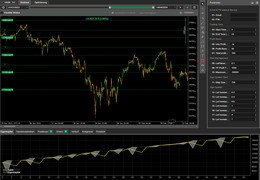Between reality and illusion If you want to know what trading really means—beyond luxury cars, piles of cash, and...
Search in blog
Blog categories
- FAQ – Your guide through the world of finance and technical facilities (2) click
- Daytrading Almanac (27) click
- Press release (23)
- Educational (26) click
- Projects (9)
- Chart analysis (39) click
- Trading bots for cTrader (11)
- AI in trading (5)
- Trading Strategien (11)
- Trading signals and stock market letters (46)
Latest posts

When it comes to traders, social media platforms often create a rather one-sided image: a young face smiling at the...

The TegasFX Instant Funding program sets a new standard for traders seeking quick access to capital without having to...

Backtesting trading strategies is an essential tool for traders who want to validate their methods across historical...

introduction In the world of trading, it can be challenging to balance the intense market activity and the rapid...
Popular posts





Featured posts





Photo gallery
No featured images
Archived posts
Top authors
-
 Christian Lill 70 Posts View posts
Christian Lill 70 Posts View posts -

-

-

-

Introduction to day trading
1. What is day trading?
Introduction:
In the world of financial trading, Day trading is a term that is often associated with excitement, risk and fast decisions. But what exactly is day trading and how It differs from other forms of trading such as swing trading or long-term investing? Let's explore this fascinating world.
What is day trading?
Day trading refers to the buying and selling of financial instruments within a trading day. The aim is to to profit from short-term market fluctuations. In contrast to longer-term Investment strategies, day traders typically close their positions before the End of the trading day to avoid overnight risks.
Example 1:
Let's assume a day trader buys in the morning 100 shares of Company X at a price of 50 euros per share. During the In the morning, the price rose to 52 euros due to positive news. Trader sells his shares and realizes a profit of 200 euros before Fees.
Differentiation from swing trading and long-term investing:
Swing trading differs from Day trading through the holding period of the positions. Swing traders hold their Positions over days or weeks to benefit from longer-term market trends Long-term investors, on the other hand, buy and hold securities over months or years, in the hope of increasing value and Dividends.
Example 2 (swing trading):
A swing trader buys shares of Company Y because he has recognized an upward trend. He holds the shares for two weeks and then sells them at a considerable profit after the price rose as expected.
Example 3 (Long-term investing):
A long-term investor buys shares of Company Z, convinced of its solid growth potential. He plans to To hold shares for several years and to benefit from price increases and dividends benefit.
Risks and requirements:
Day trading requires fast Decisions, a deep understanding of market movements and an effective Risk management. It is not uncommon for day traders to spend several hours a day follow market developments and react quickly to changes.
Conclusion:
Day trading can be for those who have the necessary skills and are willing to work intensively with the markets can be quite profitable. It differs However, it differs significantly from swing trading and long-term investing due to the short Holding period of positions and the need to react quickly to market movements react.
Leave a comment
Related posts
 Requirements for entry
Requirements for entry
 Choosing the right trading platform
Choosing the right trading platform
 Understanding market indices
Understanding market indices
 History of day trading
History of day trading
